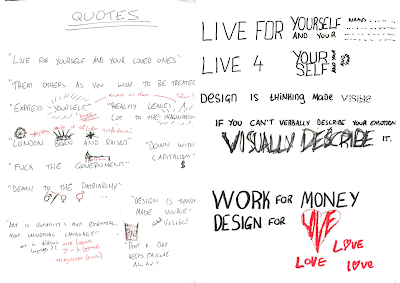For the second project of this 2 week mini-project series, I looked into another type-based brief. This project asked us to design a complete alphabet based on a particular theme. Looking into examples of fonts and types, I began experimenting with how to portray my chosen theme (tribal) and how I could keep in line with a functioning font. The reason for this came through my research into type and how, despite theme, shape or form, the consistent factor with font design is that they are still able to fulfill the requirement of legible lettering.
Through my initial ideas, I performed a bit of brief market research into what people liked the look of. I asked the people I surveyed which font they would most closely connect to my theme but also would be aesthetically effective as well as functioning as a typeface.
I drew the above alphabet out and started to briefly experiment with colour. The outcomes, as shown below, show what would the font actually look like if it were to be used professionally. There are two different modes to this font, one being an outline and the other being block as this seemed like quite a good way to keep the font open to use in design.
I was quite happy with these outcomes as they fitted my theme well, but I would have preferred to spend a bit more time in Illustrator refining the shape of the lettering.




















